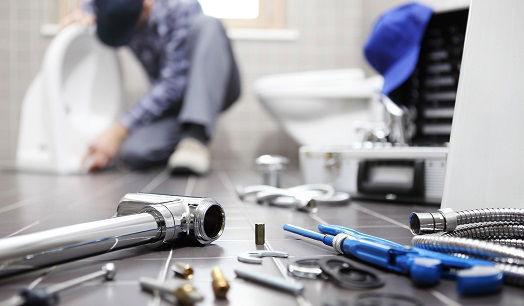The Essential Guide to Plumbing: What You Need to Know
Plumbing is an indispensable aspect of our daily lives, providing the infrastructure for clean water and effective waste management. From the pipes hidden within our walls to the intricate systems that manage sewage, plumbing is a marvel of engineering that ensures our homes and businesses run smoothly.
In this blog, let’s explore the essentials of plumbing, its history, key components, common issues, and maintenance tips to keep your plumbing system in top shape. For more information visit this link.
A Brief History of Plumbing
The origins of plumbing can be traced back to ancient civilisations. The Romans, known for their advanced engineering, built extensive aqueducts and sewer systems. They used lead pipes to distribute water and had public baths and fountains. The word "plumbing" itself comes from the Latin word "plumbum," meaning lead, due to the use of lead pipes in early systems.
In the 19th century, plumbing underwent significant advancements with the introduction of modern water supply and sewage systems. The development of materials like cast iron and later copper and plastic revolutionised plumbing, making it more efficient and accessible.
Key Components of a Plumbing System
A plumbing system comprises several essential components, each serving a critical function:
- Pipes and Fittings: Pipes are the arteries of the plumbing system, transporting water to and from various locations. Common materials include copper, PVC, PEX, and galvanised steel. Fittings, such as elbows and tees, connect pipes and allow for changes in direction and diameter.
- Valves: Valves control the flow of water within the system. Key types include gate valves, ball valves, and check valves. They are crucial for shutting off water supply during repairs or emergencies.
- Fixtures: Fixtures are the endpoints where water is used, including sinks, toilets, showers, and faucets. They come in various designs and materials, providing functionality and aesthetics to our living spaces.
- Drainage System: The drainage system removes wastewater from your home, ensuring it is safely directed to the sewer or septic system. It includes drainpipes, traps, and vent pipes, which prevent sewer gases from entering your living areas.
- Water Heater: This device heats water for domestic use, such as bathing and washing. There are various types, including tankless, solar, and conventional tank heaters.
- Sump Pump: Installed in basements or crawl spaces, sump pumps prevent flooding by removing excess water that accumulates in a sump basin.
Common Plumbing Issues
Even the most well-maintained plumbing systems can encounter problems. Here are some common issues homeowners face:
- Leaks: Leaky pipes and fixtures are among the most frequent plumbing problems. They can result from corrosion, high water pressure, or improper installation. Not only do leaks waste water, but they can also cause significant damage to your home.
- Clogged Drains: Blockages in sinks, toilets, and showers can disrupt daily routines. They are often caused by a buildup of hair, grease, soap scum, and foreign objects. Regular maintenance and careful use can prevent many clogs.
- Low Water Pressure: Reduced water pressure can be frustrating, making tasks like showering and washing dishes less effective. It can result from pipe obstructions, leaks, or issues with the municipal water supply.
- Running Toilets: A toilet that runs continuously can waste a substantial amount of water. The problem is usually due to a faulty flapper, fill valve, or overflow tube.
- Water Heater Issues: Problems with water heaters, such as insufficient hot water or strange noises, often stem from sediment buildup, faulty thermostats, or aging components.
- Frozen Pipes: In cold climates, pipes can freeze, leading to bursts and water damage. Proper insulation and precautionary measures can prevent this issue.
Plumbing Maintenance Tips
Proper maintenance is key to preventing plumbing problems and extending the life of your system. Here are some essential tips:
- Regular Inspections: Periodically check for leaks, corrosion, and other signs of wear and tear. Inspect visible pipes, faucets, and water heaters for potential issues.
- Clean Drains: Use strainers to catch debris and prevent clogs. Avoid pouring grease, coffee grounds, or harsh chemicals down drains. Regularly clean drains with baking soda and vinegar to keep them clear.
- Monitor Water Pressure: Keep an eye on water pressure levels. If you notice a drop, it could indicate a problem with your plumbing or the municipal supply. Installing a pressure regulator can help maintain optimal pressure.
- Flush Water Heater: Sediment buildup in water heaters can reduce efficiency and lifespan. Flush the tank annually to remove accumulated sediment and check the anode rod for replacement if necessary.
- Insulate Pipes: In colder climates, insulate pipes to prevent freezing. Pay special attention to pipes in unheated areas like basements, attics, and crawl spaces.
- Know Your Shut-Off Valves: Familiarize yourself with the location of your main water shut-off valve and individual fixture valves. This knowledge can be invaluable during emergencies.
- Schedule Professional Inspections: Hire a licensed plumber for annual inspections and maintenance. They can identify potential issues and provide expert advice on keeping your system in top condition.
Summing Up
Plumbing is a crucial part of modern living, providing us with clean water and effective waste management. Understanding the basics of your plumbing system and performing regular maintenance can help prevent costly repairs and ensure your system functions efficiently for years to come. Remember, a well-maintained plumbing system not only adds convenience but also protects the value and safety of your home.
By staying informed and proactive, you can tackle plumbing challenges with confidence and keep your water systems flowing smoothly. Whether you're a homeowner or renter, having a solid grasp of plumbing essentials is a valuable asset in maintaining a comfortable and functional living space. For more tips and expert advice on plumbing, be sure to visit website for comprehensive guides and professional services.
Source From: The Essential Guide to Plumbing: What You Need to Know

